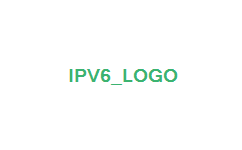The following addresses are defined to aid in the coexistence of IPv4 and IPv6 nodes:
- IPv4-compatible addresses: The IPv4-compatible address, 0:0:0:0:0:0:w.x.y.z or ::w.x.y.z (where w.x.y.z is the dotted decimal representation of a public IPv4 address), is used by IPv6/IPv4 nodes that are communicating with IPv6 over an IPv4 infrastructure. When the IPv4-compatible address is used as an IPv6 destination, the IPv6 traffic is automatically encapsulated with an IPv4 header and sent to the destination using the IPv4 infrastructure.
- IPv4-mapped addresses: The IPv4-mapped address, 0:0:0:0:0:FFFF:w.x.y.z or ::FFFF:w.x.y.z, is used to represent an IPv4-only node to an IPv6 node. It is used only for internal representation. The IPv4-mapped address is never used as a source or destination address of an IPv6 packet. The IPv4-mapped address is used by some IPv6 implementations when acting as a translator between IPv4-only and IPv6-only nodes.
- 6over4 addresses: 6over4 addresses are composed of a valid 64-bit unicast address prefix and the interface identifier ::WWXX:YYZZ (where WWXX:YYZZ is the colon hexadecimal representation of w.x.y.z, a unicast IPv4 address assigned to an interface). An example of a link-local 6over4 address based on the IPv4 address of 131.107.4.92 is FE80::836B:45C. When the automatic tunneling mechanism defined in RFC 2529 is used, 6over4 addresses are assigned to IPv6 nodes that are connected to an IPv4 multicast-enabled infrastructure.
- 6to4 addresses: 6to4 addresses are based on the prefix 2002:WWXX:YYZZ::/48 (in which WWXX:YYZZ is the colon hexadecimal representation of w.x.y.z, a public IPv4 address). When the automatic tunneling mechanism defined in RFC 3056 is used, 6to4 address prefixes are used to create global address prefixes for sites and global addresses for IPv6 nodes within sites.
- ISATAP (Intra-Site Automatic Tunnel Addressing Protocol )addresses: ISATAP addresses are composed of a valid 64-bit unicast address prefix and the interface identifier ::0:5EFE:w.x.y.z (where w.x.y.z is a unicast IPv4 address assigned to an interface). An example of a link-local ISATAP address is FE80::5EFE:131.107.4.92. When the automatic tunneling mechanism is used, addresses using ISATAP-derived interface identifiers are assigned to IPv6/IPv4 nodes.



4 comments:
Good topic.....
Good topic...
This is very informative blog. contains useful information regarding ipv6.
Can you tell me something about ipv6 support in 64 bit machines?
Post a Comment